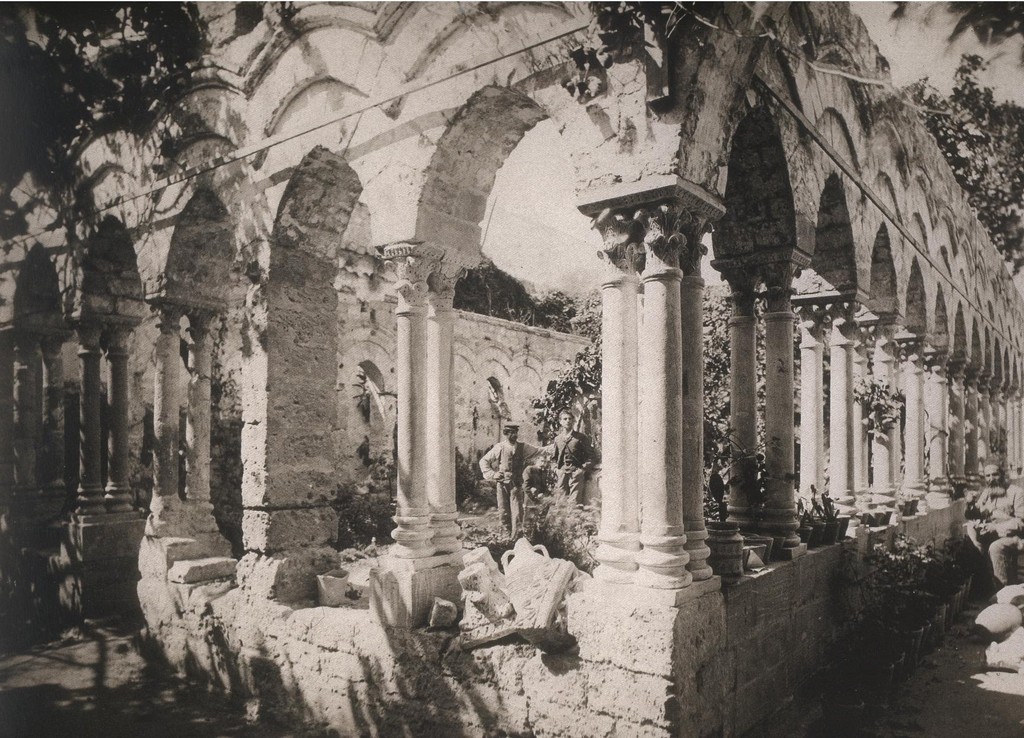
Read Italiano version
Just a few steps away from the Royal Palace is the Church of San Giovanni degli Eremiti, in via Benedettini, built by Roger II, between 1130 and 1148 on a site that had been used since Pagan times as a place of worship, where there used to be an ancient monastery and during the Arab domination, a mosque.
The monastery and the church are erected on the structure of an earlier building, founded according to tradition by St Gregory the Great, in the sixth century and dedicated to Saint Hermes; it is its mispronunciation that eventually gave us the title of Hermits. This monastery was designed according to the Islamic-Byzantine canons of the day (geometric parallelograms representing the earth, surmounted by domes representing the heavens) comprising The Sala del Capitolo, a dormitory, refectory, cemetery, the church of San Giovanni and an adjoining cloister, still maintaining its air of quiet holiness.
It is compact and bare, set amidst exotic vegetation. All that remains of the original site is this group: the Church, the cloister and some ruins of the monastery.
East facing, the church is on a cross plan with a nave, a combination of two cube -shaped bodies, separated by high ogival arches, each ogival window arch is covered with a dome supported by angular niches. The transept, formed by three other smaller cupola elements engages the central part of the nave, forming a T (Tau cross plan). The exterior view of the whole is very lively thanks to the five domes covered with red coating. The bell-tower stands to the west of the transept with three orders of windows. The lateral walls of the church have ogival windows that would have originally had arabesque transennas, made of plaster of Paris. The square based structures have angular niches at each corner to support the domes, they remain the only ornament of what once would have had painted walls. At the end of the nineteenth century, after a long period of renovation by G. Patricolo and F. Valenti new life was breathed into an even older structure: to the right of the transept , with a rectangular hall, a porch and a covered courtyard.
In Rogers time, during the Norman period, the hall could have been used as a place of worship, two medieval frescoes of uncertain date testify to this use (Madonna enthroned between Saint Giovanni blessing and Saint James or Hermes).
The last vestige of the monastery is its Cloister with its twin double lintel columns, with ogival arches and a romantic well in the centre. Amazing is the lush garden rich in citrus trees, loquats, and bay trees creating the feeling of being in an oasis of peace amidst the bustle of a busy city, Palermo.
TIMETABLE: Mon – Sat 9,00 am /7,00 pm (last entrance 06,30pm)- Sunday&holiday 09,00am / 01,30pm(last entrance 01,00pm)
Ticket.
Contacts: 091 651 50 19
